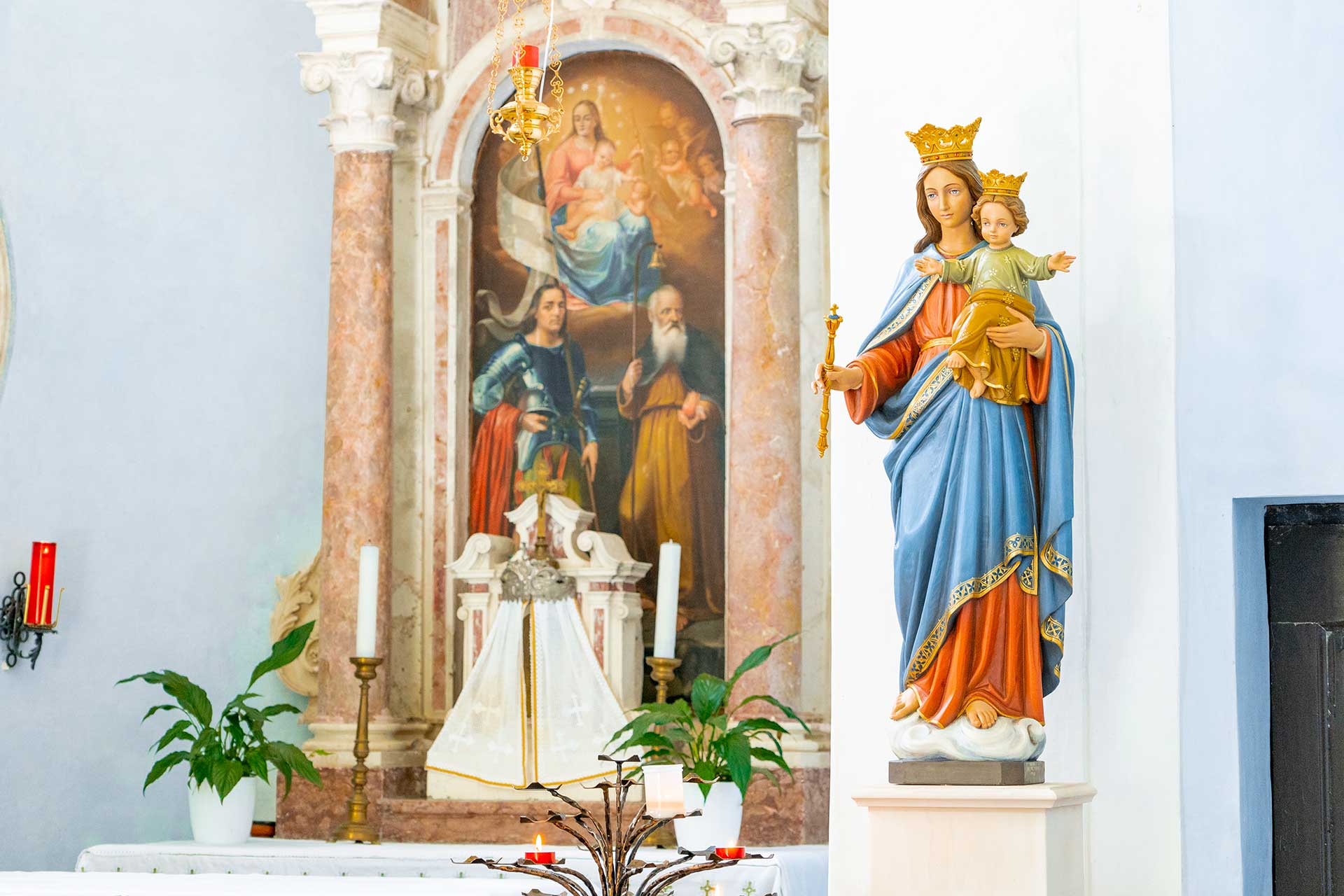Borgo Miliés
Nature
and artt
Miliés (680 m a.s.l.) is an ancient village that combines nature, history and art, and is a starting point for countless walks and excursions: Casera Miliana, Col da Fi, Monte Zogo which reaches 1,394 m a.s.l..
Miliés is also crossed by the E7 European Long Distance Path, whose route starts in Lisbon, crosses Spain, passes the Pyrenees and the Cote d’Azur, descends towards the Adige River and Mount Grappa, reaching Miliés and then continuing east to Romania.
The little church of Mary Help of Christians and Nanin’s well
The little church dedicated to Mary Help of Christians, also known as “Little church of the Alpine Troops“, dates back to 1875 and was presumably built on a pre-existing chapel. It has been recently restored and is the pride of the local Alpine Troops Association and of the whole village.
With its neoclassical facade, the small church is composed of a rectangular hall with an apsidal presbytery to the west, a small sacristy in the shape of a semi-dome and a bell tower. Although it is dated 1875, from the frescoes discovered under 6 layers of paint during restoration work in 2014, it can be deduced that it probably dates back to about 100 years earlier.
Under the tympanum, in a small niche, there is a statuette of St. Lucy, dating back to about 1250.
The altar is dated 1741 and represents St. Anthony Abbot on the right, St. Liberalis on the left and the Virgin Mary with Baby Jesus above.
In the apse on the left of the altar there is a medallion representing Mary with Baby Jesus, while on the right side we find Saint Anthony of Padua holding a lily. A third medallion depicting St. Lucy can be found above the doorway. At the center of the vaulted ceiling we can see a painting dating back to the 1940s depicting the risen Christ blessing. To the right of the altar there is a statue of the Madonna and Child of the well-known Ortisei sculptor Vincenzo Giacomo Mussner.
Another interesting stop on the walk through the streets of Miliés is Nanin’s well, which owes its name to its last keeper, Giovanni Puttin. It has a depth of about 10 m and still has water entering it from an underground spring. Nowadays the well is not in use anymore but in days gone by it served the population of Miliés until 1939 when the Public Works Office had a system installed in Stramare to bring drinking water to the village.
Ritrovamenti sul monte Doc
Besides being popular among trekking and mountain bike enthusiasts, Mount Doc (also called Zogo) is famous for the archaeological findings dating back to the Neolithic and Eneolithic age. Discovered in 2001 and located in the area between the Forcella and the top of Monte Doc at an altitude between 1,325 m. and 1,360 m. a.s.l., the site contained a large amount of flint tools used for hunting, cutting and woodworking. Thanks to these important findings we can assume that the area was already inhabited by sedentary or migrant populations at the time of the Neanderthal man (80-35 thousand years ago).











